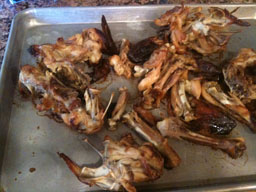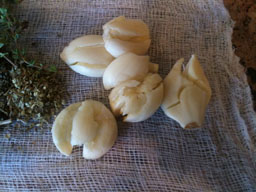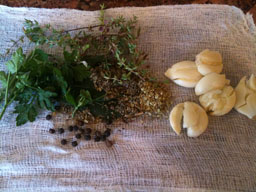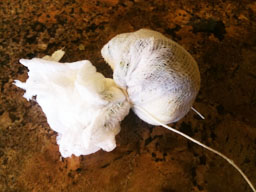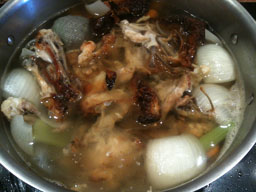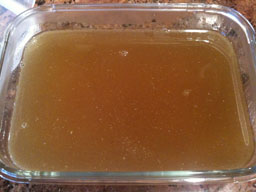Homemade Chicken Stock
I have to say, this is the best homemade chicken stock recipe I have every tasted. Once you learn to make homemade stock, you will never purchase commercially made stock again. By making your own, you control the quality of the ingredients, as well as the ingredients. Don’t be afraid to experiment. The following is only a guideline. If you love garlic and want more in your stock, by all means add it. Also, if you hate bay leaf, delete it from the recipe. I start making my stocks when it starts getting cool outside because I like to roast the bones for the stock. It gives the stock more flavor. I make chicken, beef, lamb, turkey, and veggie then freeze them in small and medium containers so I have an assortment when I go to use them. Also, I don’t cook anything in water if I have stock in the freezer. Use your stock in place of water when cooking potatoes, risotto, rice, any soup, polenta, etc. You will bring your recipes to an entirely different level of deliciousness.
Homemade Stock
bones of whatever stock you are making (beef, chicken, lamb, turkey{a great use of the bones after Thanksgiving dinner}, or an assortment of veggies if making veggie stock)
Roast these in a 375 degree oven for 45 minutes. NOTE: keep an eye on them so they don’t turn black – don’t use them if they do burn because your stock will be bitter.
1 large onion, peeled and quartered
2 large carrots, cut into chunks
6 cloves of garlic, cracked*
4 dried or 6 fresh bay leaves*
2 t thyme leaves*
2 T flat leaf parsley*
1 t oregano*
1 T basil*
10 – 15 whole black peppercorns*
*Make a bundle with cheesecloth that contains all the herbs.
Tie with linen kitchen twine and place in a large stock pot.
Add 3 to 4 quarts water to the stock pot and bring to a boil. Immediately reduce the heat until the water is no longer boiling and add your roasted bones along with the quartered onion and the chunked carrots. Do not allow the water to boil with the roasted bones in it or the stock will be cloudy.
Continue to cook on very low heat for 3 – 4 hours adding more water as needed. Remove from heat and strain through a cheesecloth lined colander.
Allow to cool completely. Portion into freezer safe containers, label with the contents and the date and place in the freezer for later use.

